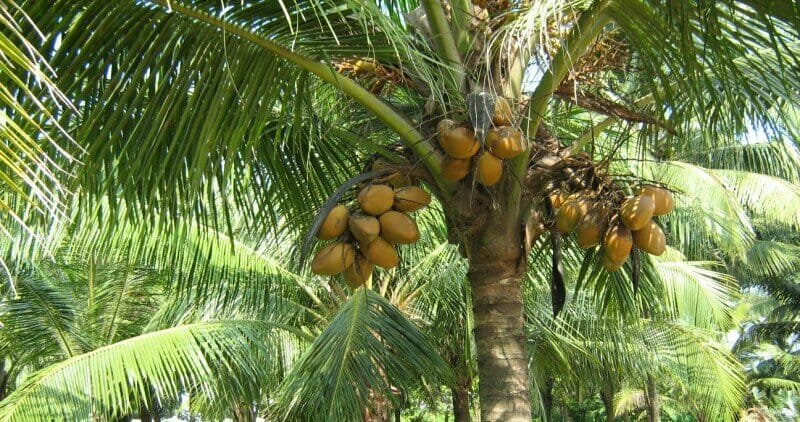“Thennam Pillai” means in Tamil Coconut Child. It is a very common name, how a coconut tree is called a coconut child rather than calling as it is a coconut tree. So the tree is referred to as a child. If someone has a coconut garden, he/she is often queried with a question “How many coconut children you have?” in Tamil. I am not sure this is how people relate coconut trees all over Tamilnadu, but I am pretty certain this is how one converses in Southern Tamilnadu.
Kanyakumari Agrarian Production
Is there any other tree called as such? No, I don’t think so. South Tamilnadu is known for its green paddy fields, vast banana tree and coconut farms as their main source of agrarian culture. Especially in my home district Kanyakumari, rice, bananas, and coconuts are the main farming products. But farmers don’t call rice or banana as children though they play a vital role in their economy and as a food resource.
Coconut Tree Usage
Firstly, coconut trees have a long life span. It takes at least 5 years to produce their first coconut. Then every three months, it births a new bunch of coconuts starting as flowers. Based on this, every three-month farmers harvest it. Usually, someone has to claim on the coconut tree to pluck or cut the coconuts. Coconut climbing is a skill or a profession identified as “Coconut Climber.” Farmers spend enormous time and care on these growing coconut plants.
Secondly, coconut trees not only useful for their well-known product coconuts, but half-riped coconuts are used as drinks. Their branches with leaves are useful as roofs of a house. For centuries, before tiled rooftops and concrete house culture, coconut branches were used as house covers to protect people from rain, heat, sunlight, and dust. Its long branch with leaves is a good choice.
Common Duty of a Child in South Asia
In South Asian tradition, Parents would expect their children to take care of them when they become older. During the time when they become reliant on others or when their body and mind cannot function enough to support them fully, they expect their children to help and support them. Today, many countries have a health care plan that would cover elderly people and take out the burden from their children such as fully funded elderly homes. But India is not such a country when comes to health care. Majority Indians don’t hold health insurance. Probably don’t even know such options exist. It is a country with a 1.35 billion population. While their struggling financial situation is not enough to meet the basic amenities, health care is unthinkable. It is only becoming thinkable when they face sickness and other fatalities. It is worse when elderly people’s earning halts. The only option and hope left for an ordinary aged Indian that their children will take care of them when they hit the elderly patch.
How Tree Becomes a Child
A farmer plants and nurtures a coconut tree for a minimum of five years. After 5 years, they can harvest from it. Then it goes on for a lifetime many decades. Initially, a farmer takes care of the tree and the coconut tree will start to benefit the farmer by giving its coconuts, branches, and toddy drinks. The owner of the tree only will be receiving from the coconut tree but no more giving such as watering and fertilizing. Like a grown-up Indian child takes care of their parents, but once the children received nurture and caring from their parents. Now they are giving back and parents are on the receiving end many years. The once recipient coconut tree becomes a giving back coconut child. A coconut tree becomes a coconut child.
